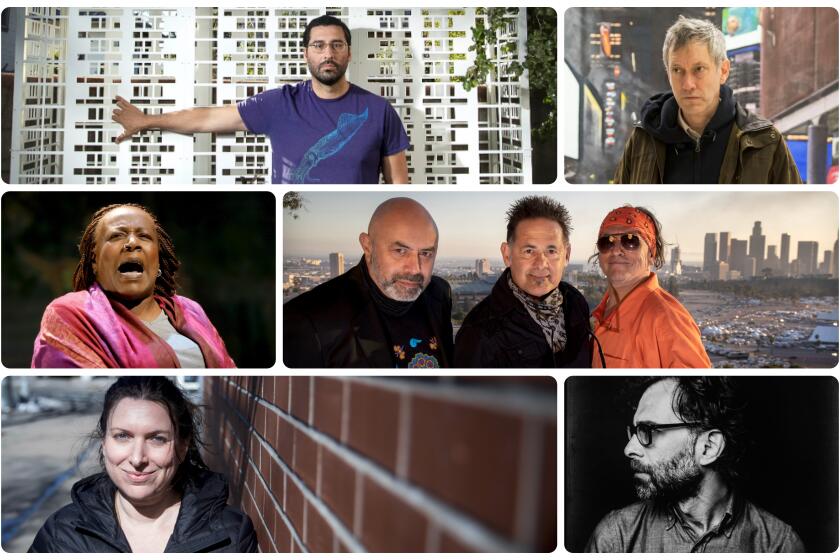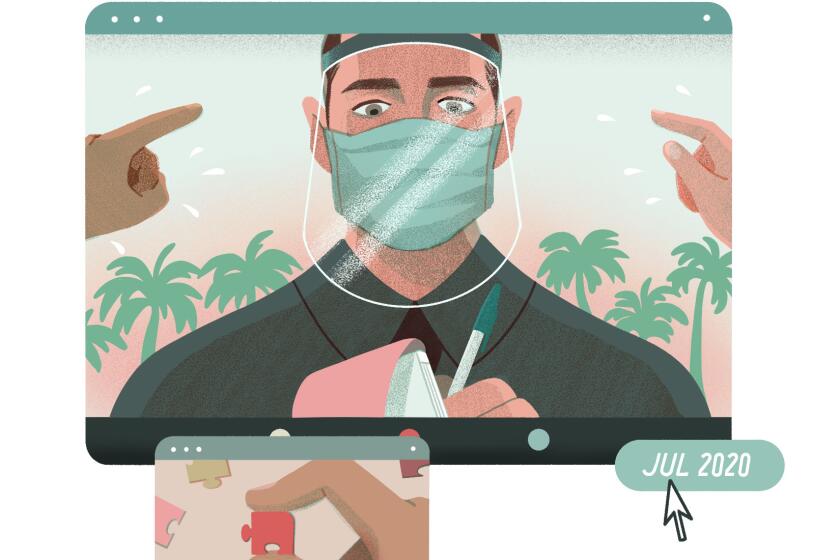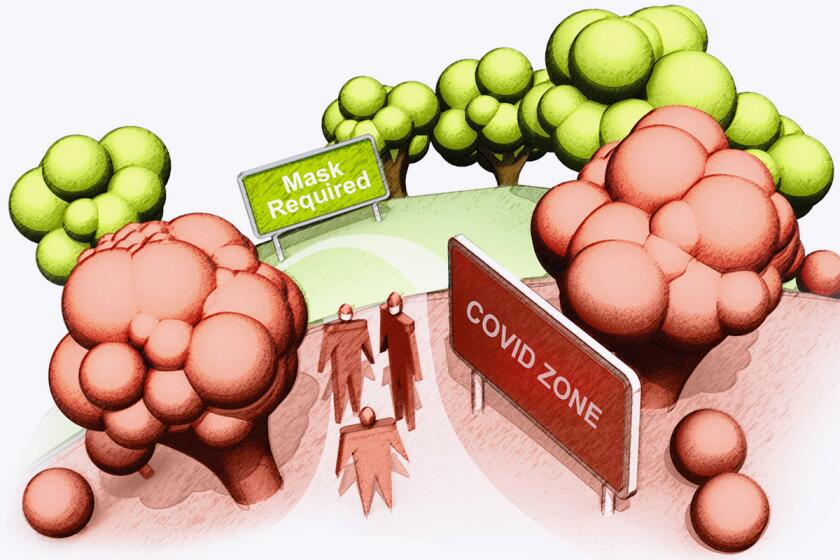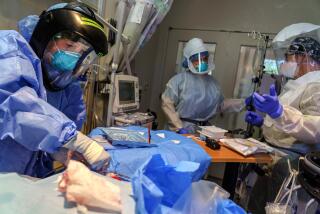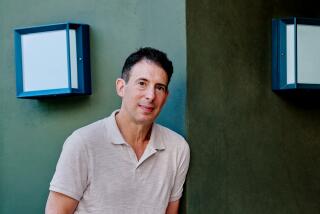Column: We can finally see the end of the pandemic. We just need to not implode before we get there
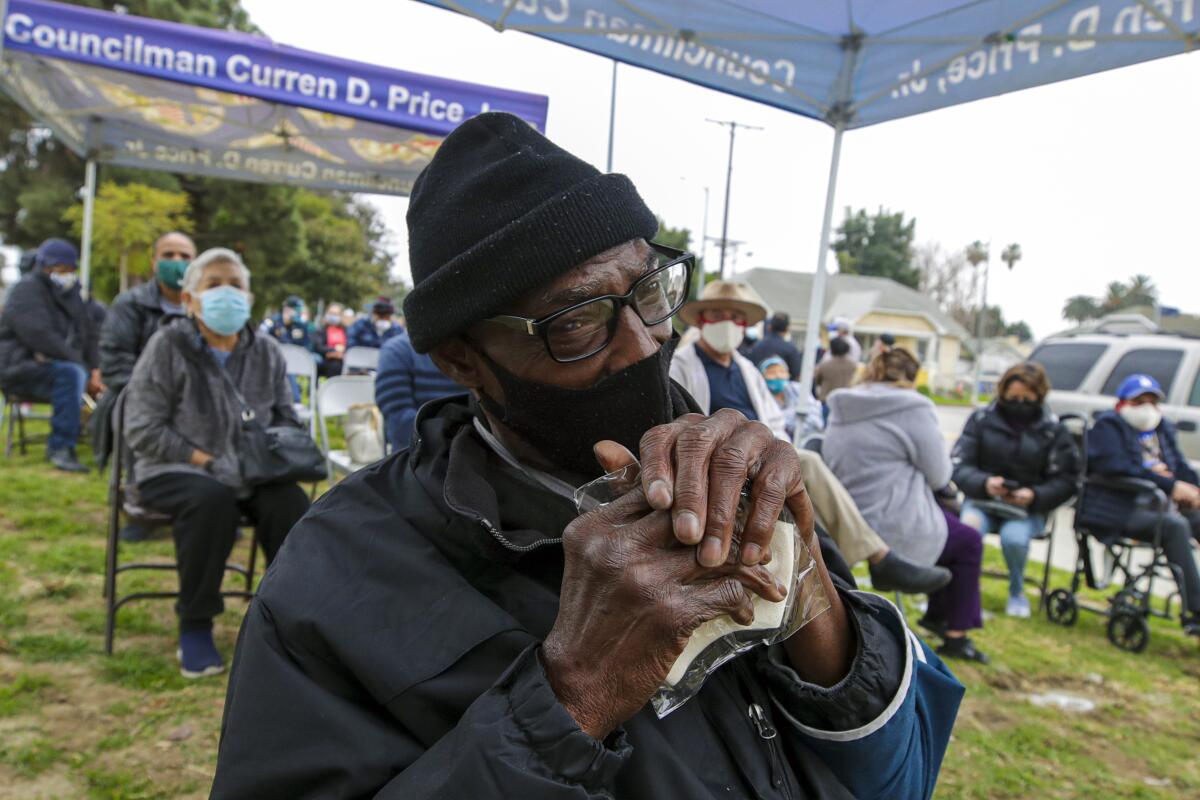
COVID-19 infection rates, hospitalizations and deaths are all dropping. Three vaccines are being administered in increasingly efficient, albeit still imperfect, ways. All teachers in California are now eligible, which means that schools in hard-hit Los Angeles County may open before the semester is over, relieving millions of parents of the their second (or third, or fourth) job — home educator.
A $1.9-trillion relief package was passed by Congress. More people are wearing masks, and fewer are throwing fits when asked to do so; a recent warm spell may not be good for the drought, but blooming trees and clear days bring the enduring hope of spring and summer. A summer that might actually include travel and events that, while still curtailed and involving the above-mentioned masks and social distancing, could mark a return to pre-pandemic life in a very real way.
So why are so many people hitting a wall now?
I don’t mean healthcare workers or front-line workers or first responders; these heroic warriors have been hitting walls and then throwing themselves once more unto the breach, dear friends, for going on 13 months now.
The World Health Organization announced the coronavirus outbreak had become a pandemic on March 11, 2020. Since then, the virus has seemingly touched all aspects of life in Southern California and beyond. The Times looks back on a full year of life in a pandemic.
I mean people who have managed to avoid the coronavirus, or survive mild bouts with it — the still (thank God) majority of Americans who have been fighting the social and economic effects of the pandemic rather than the virus itself.
Today’s anniversary — it was March 11, 2020, that the World Health Organization declared the COVID-19 outbreak a pandemic — is a big part of the problem. As the many virtual renditions of “Rent’s” iconic song have asked, how do you measure the “five hundred twenty-five thousand six hundred minutes” of a year, especially a year in which so many of the traditional ways of measuring and organizing time were suspended?
How do we come to grips with 12 months that existed so far outside, or burrowed so deeply inside, life as we once knew it?
From last March to this, time itself seemed to defy its own rules — days sped by, weeks hung motionless, months presented themselves as eternity, then completely vanished behind us. “Is it March again already?”
It was a year hurried by fear, weighted down by grief or dread, elated by certain freedoms, deflated by increasing deprivations. We moved through whatever rituals remained, creating new ones when we could, feeling by turns exhausted and restless, bored and determined, outraged and empathetic.
And always, always each day was marked by the lists of the dead, the dying, the jobless, the millions struggling to help them.
Daniel Fish, Culture Clash, Dael Orlandersmith, Richard Maxwell, Annie Dorsen and Lars Jan reveal much loss — but also see a way forward.
How do you measure a year like no other? In bar graphs? In colored tiers? By the phases of personal cleaning/crafting projects? The growth of your pandemic pet? With staycation and quiet holiday photos? By the endless obituaries?
A year ago this week, I arrived back in Los Angeles after attending 2020’s last live international film festival, the True/False Film Festival in Columbia, Mo. This seems impossible on at least five different levels. Has it only been a year since I blithely flew halfway across the country, mask- and hand santizer-free?
Only a year since I nestled into one crowded movie venue after another, grabbing coffee and sandwiches in one crowded eatery after another. There was a virus, we knew, so we laughingly (laughingly!) skipped handshakes and hugs out of “an abundance of caution” as I met one friend or filmmaker after another.
It feels like a lifetime ago that I saw my last film in a theater, Kirsten Johnson’s “Dick Johnson is Dead,” which closed the festival. I am grateful for this small kindness of fate. Johnson’s genius blend of absurdity and pathos as she chronicled how she prepared herself for her father’s death by staging, with his enthusiastic participation, one ghastly death scene after another, was in many ways a perfect introduction to the year that would follow.
You had to laugh, when you weren’t crying.
As our series of Dispatches from the Pandemic marks a year, we feature excerpts and updates from those who reached out during a year of COVID-19.
I flew home from a quite crowded Kansas City airport to a shockingly empty and silent LAX, and I stopped by The Times’ office for a brief chat with my editor before heading to a class I teach.
That was pretty much the last time I saw my editor or any of my colleagues in person. When I got home that evening, there was an intraoffice memo saying that anyone traveling outside of L.A. had to self-quarantine for two weeks (whoops) and from there, well, we all know how it went.
So much has happened since that March, so many deaths, so many daily acts of courage, so much political and economic upheaval, so many denials, revelations, marvels, accusations and announcements and, above all, so many freaking proclamations that life in one way or another “will never be the same again.”
Yet, for so many of us, in so many ways, every day has been exactly the same again.
Here is my screen, my keyboard, my phone, my window; there are my husband and children with their screens, keyboards, phones and windows. Here are our walks, our trips to the grocery and hardware stores, and the endless laundry, food prep and cleaning demands of a house suddenly perpetually full of four adults and a teen who never go anywhere much.
Our dishwasher gave up the ghost a few months in; we had to buy a new refrigerator in February. Our washing machine and dryer have thus far survived, though honestly I am not sure how. So. Much. Laundry. So. Many. Hoodies.
Occasionally we take different walks, even short jaunts to another part of town or, on two occasions, the state. There we perambulate amongst different scenery and mobile-order food — masked, socially distant, seeking some watered-down sense of normalcy. Sometimes, we have a backyard movie night, intentionally spruced up with the soda, popcorn and Twizzlers we used to buy in theaters. My brother-in-law, God bless him, has hosted a family Zoom game night every Saturday.
Honestly, the only thing that really changes on an actual daily basis is which family member has some sort of a meltdown or other.
“What’s wrong with him/her?” someone will ask even though we all know the answer. We live in Los Angeles County, which has not been out of some form of shutdown in a year. We have three children who absolutely should not be living much of their days within earshot of their parents and vice versa. Our older daughter has lost more than a year of her college experience, and our younger one, at an age where she should be going to the movies and roaming the mall, has lost half her middle school years already. Our son graduated into a world in which there were literally no jobs in his chosen field; living at home after graduation was his worst nightmare.
What do you think is wrong?
Some days, it’s fine. We are aware of our good fortune. Other days, however, we, like many others, wake to see the pandemic sitting at the foot of our bed, smiling its terrible smile, brandishing its terrible claws: the virtual learning, the doomscrolling, the news of friends testing positive or falling ill, the spring/summer/winter spikes and then, when those spikes recede, the limited reopenings amid all manner of warning that we should not let down our guard because a deadly virus is still zigzagging among us.
Even with windows, the walls close in; the pandemic crawls right up into our faces and howls. Sometimes we howl right back.
We’ve set our sights on so many “it will be better by then” dates that we’re afraid to get excited by the prospect that by summer most adults in this country could be fully vaccinated. We are elated but also sorely afraid. What will the world be like when we finally fully venture out into it? What will we be like? Grieved and weary but joyful, in a way, I hope, that slowly savors rather than voraciously stuffs. After privation, it is always better to consume slowly, allowing the body to absorb what it has lacked.
While I long for the day when I can move fully out into the world in ways without fear, I hope I can do it at a pace that allows me to feel deeply the pleasures of life in the 21st century. I hope I never again take for granted the ability to go to the movies, a museum, my child’s school, a mall, a play, a sporting event, a concert. I hope I appreciate the sight of other people being able to do the same, even if their presence means I have to wait in a line or overhear their ridiculous conversations — bring on the overheard conversations! I will never consider them ridiculous again.
I hope I remember that we have all had various versions of a truly difficult year, that some have experienced more pain and deprivation than others, but few have emerged unscathed.
During this pandemic, I have been forced to learn a fair amount of patience — to assume that everyone has days when the pandemic sits heavily on the bed and howls. Too many have experienced crippling loss and illness, physical and mental. When an email isn’t answered or a virtual appointment is changed or canceled, I try to remember that everyone is going through something and that something could be quite terrible.
I hope I remember this even when COVID-19 recedes to non-pandemic levels, when the airports, restaurants and stores are full again. When we are allowed to be close enough to jostle one another, physically and spiritually. Our culture’s pre-pandemic demand for a constant flow of goods, services, experiences and attention has long been at odds with the very real limitations of the human body and psyche. Illness, despair, exhaustion and death are not only side effects of a pandemic; they are side effects of life, and I hope I always keep that in mind, even when someone is being super-irritating.
Early in the pandemic, many people expressed gratitude for the ability to slow down, to spend more attentive time in nature, with immediate family or simply with their own selves. Some of that came from humanity’s glorious sense of pluck — our need and amazing (or neurotic) ability to find the good in the bad. But some of it was real. For many of us life was crazy-fast, far-flung and ridiculously crowded before it hit an obstacle of greater force that made it slow, circumscribed and isolated.
Neither end of the spectrum is ideal, and as we move out of the pandemic, we have a very rare chance to find, and hold on to, a healthier space in between.
For months now, my family and I have been making lists of all we will do and where we will go when movement among others is safe again. They are long and varied lists and I hope we will make our way through them — but slowly, with the memory of how precious each thing seemed when it was suddenly denied us.
So here’s to hanging on for however many weeks or months it takes. If my washer and dryer can survive, so can I.
More to Read
The biggest entertainment stories
Get our big stories about Hollywood, film, television, music, arts, culture and more right in your inbox as soon as they publish.
You may occasionally receive promotional content from the Los Angeles Times.

